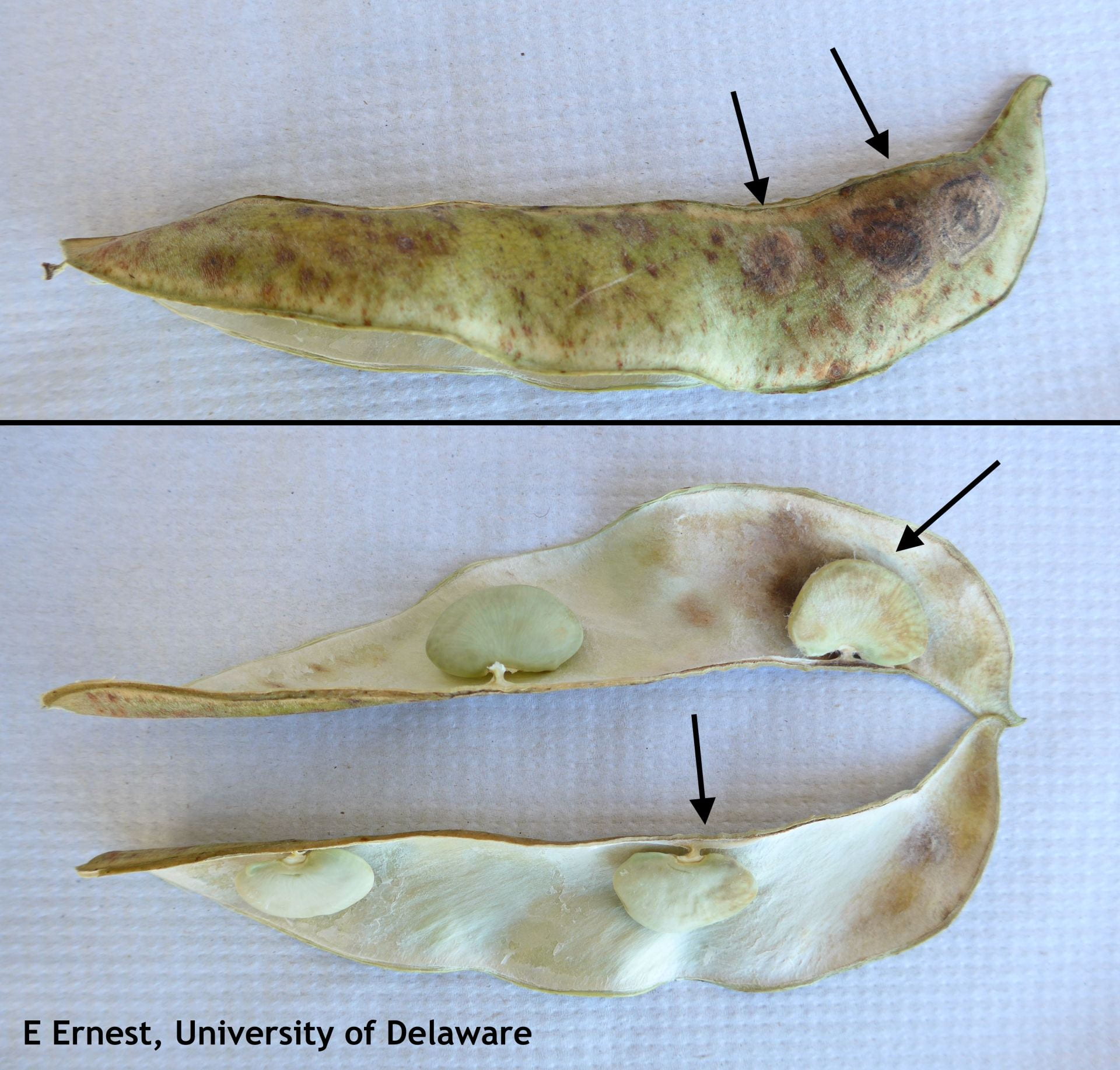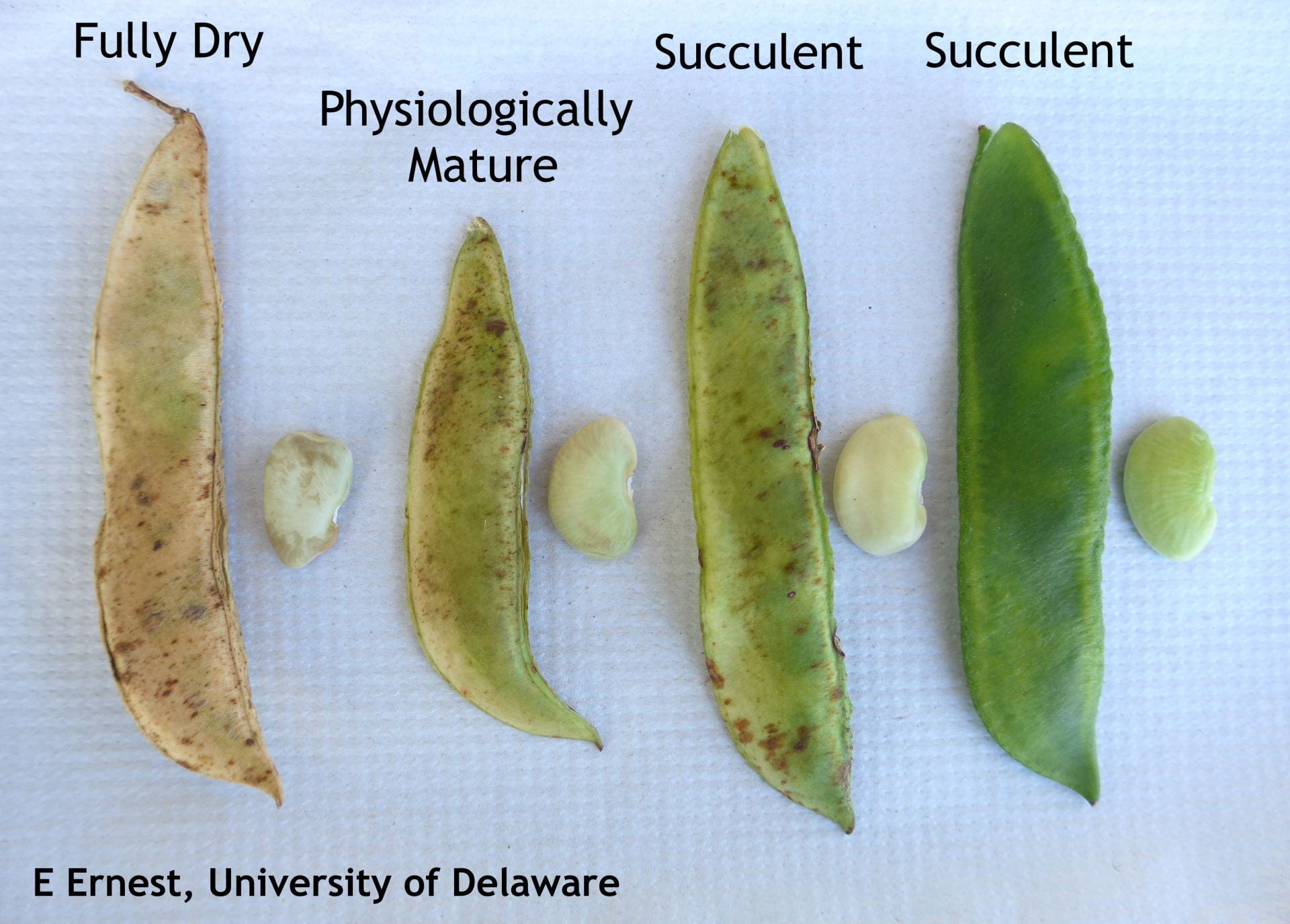Emmalea Ernest, Scientist – Vegetable & Fruit Crops; emmalea@udel.edu
Frost occurred in many locations over the last week and pole lima bean season is wrapping up. With that in mind I wanted to share some thoughts about seed saving and storage, as well as end of season clean-up.
Seed Saving
It can be challenging and expensive to obtain seed or transplants of desirable pole lima types, prompting many growers save their own seed. Lima beans are generally self-pollinated but can be cross pollinated by insects. If you are growing more than one type of lima bean or there are other lima beans growing nearby there is a possibility of outcrossing. Plants grown from seed of cross-pollinated flowers will not be true to type. If you notice atypical limas in your planting, do not collect seed from those plants or from adjacent plants if you want to maintain the characteristics of your original variety.
Save seed from pods that are visually free of disease (Fig. 1), and shell beans from the pods as soon you harvest them. I do not recommend allowing saved seed to remain in the pods to dry. Drying seed in the pod allows additional opportunity for the seed to become infected by fungi that can reduce germination or introduce disease into the following year’s planting. Also avoid seeds that have been damaged by insect feeding; stink bug feeding injury is a frequent problem (Fig. 2). Seed can be saved from pods that have not fully dried down as long as the seeds are physiologically mature (Fig. 3). Such seeds will need additional opportunity to dry before storage. Place seeds in a single layer on newspaper or paper towels until dry. Dry seed can be stored in an airtight container in the refrigerator.

Figure 1. Pods with signs of disease (indicated by arrows on the top image) should be avoided because seeds are likely to be impacted as well (bottom image). Presence of disease may not be as obvious in dry seed.

Figure 2. Seeds with stink bug feeding inury (white arrows) and signs of disease (yellow arrows) should not be saved for seed.

Figure 3. Physiologically mature pods have a papery, rather than succulent feel. Seed may not be fully dry but can dried after shelling. The pods pictured here are from a University of Delaware experimental variety which has subtle red seed coat pigmentation. The red coloration is not visible in succulent seed but becomes apparent as the seed matures.
End of Season Clean-Up
Vines should be removed from the trellis at the end of the season and disposed of away from the production area. Sanitation is important in pole limas since they are often planted in the same location for many years. Fungal diseases can overwinter on leaves and vines, causing early infection in the next year’s crop.
It is also a good idea to dig up a few plants to check roots for signs of galling from root knot nematode. This is especially true if you know you have areas with poor plant vigor and yield. If you notice galling symptoms, consider moving your production area or other recommended RKN management practices.
